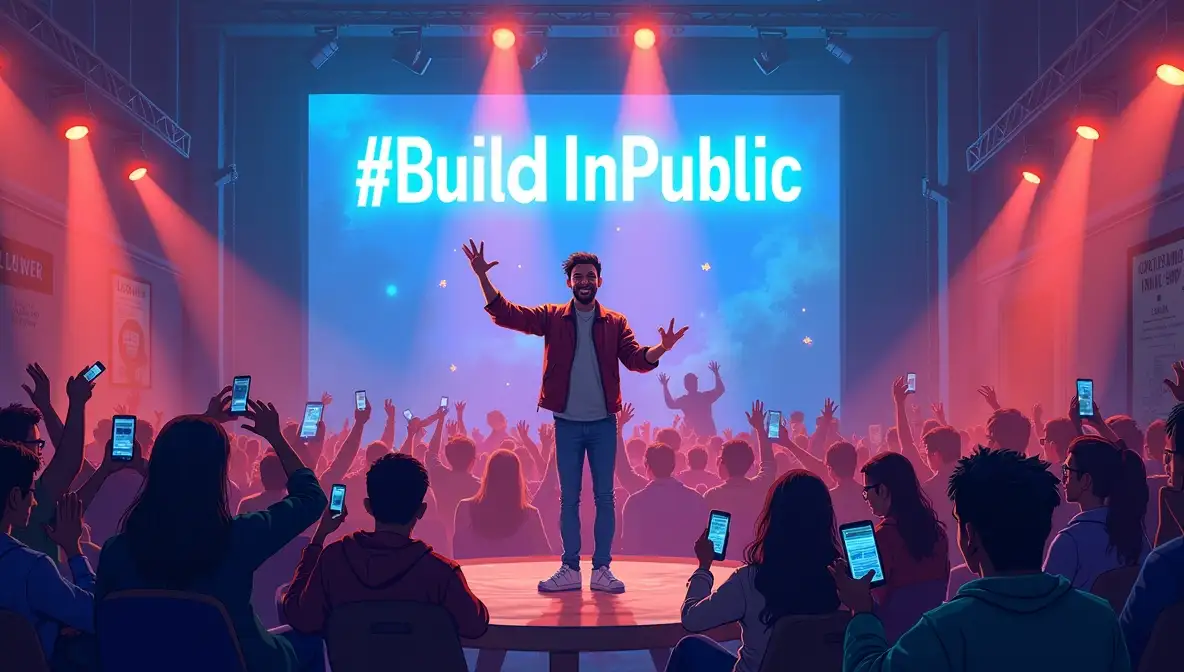When Building in Public Becomes a Distraction

The "build in public" movement has created a generation of founders who are better at documenting their journey than understanding their customers. While transparency and community can be powerful, many entrepreneurs have turned startup building into performance art.
The Paradox of Public Building
Building in public promises authenticity, but often delivers the opposite. When every decision becomes content, founders start optimizing for engagement rather than customer value. The result? Startups that look successful on Twitter but struggle to find paying customers.
Four Ways Public Building Can Derail Your Focus
1. The Content Creation Trap
Creating compelling content about your startup takes significant time and mental energy. A thoughtful blog post might take half a day. A polished video update could consume an entire afternoon. While these activities feel productive, they're often displacement behavior for harder tasks like customer interviews or sales calls.
Consider the opportunity cost: those same hours could be spent talking to potential customers, refining your product, or building meaningful partnerships.
2. Audience Misalignment
The people who follow startup journeys on social media are typically other founders, developers, and startup enthusiasts. They're an engaged audience, but they're rarely your customers.
This creates a dangerous feedback loop. You build an audience of people who understand your struggles but don't represent your market. A founder selling project management software to construction companies might get thousands of likes from other tech entrepreneurs, but zero interest from actual contractors.
3. Feedback From the Wrong Sources
When you ask your social media audience for product feedback, you're essentially conducting market research with non-customers. The features that excite other founders might be irrelevant to your actual users.
Real customers care about solving their specific problems efficiently. They want reliability, simplicity, and results. Twitter followers often suggest complex features that sound impressive but add little value.
4. Vanity Metrics Over Business Metrics
Social media metrics provide immediate gratification but poor business insight. Followers, likes, and shares feel like progress, but they don't translate to revenue or customer satisfaction.
This creates a dangerous addiction to social validation. Instead of measuring customer acquisition, retention, and satisfaction, founders chase viral posts and engagement rates.
When Building in Public Actually Works
Building in public can be effective when your audience and your customer base overlap significantly. This happens when you're building tools for the same community that follows startup content.
Examples include:
Developer tools: If you're building for programmers, sharing your technical journey resonates with your target market
Creator economy tools: When your customers are content creators, your building process becomes relevant content
Founder-focused services: Marketing tools for startups, productivity apps for entrepreneurs
The key is alignment between your audience and your customers.
A More Focused Approach
Instead of building in public, consider building for your customers:
Deep Customer Research
Spend time understanding your ideal customers' daily workflows, frustrations, and goals. Find where they gather online and offline. Learn their language and priorities.
Targeted Content Strategy
Create content that solves your customers' problems, not content about your startup's problems. Write guides, tutorials, and insights that provide genuine value to your market.
Direct Customer Engagement
Join the communities where your customers spend time. Participate in discussions, offer helpful advice, and build relationships before pitching your product.
Customer-Driven Development
Base product decisions on feedback from paying customers and qualified prospects, not social media polls or founder forums.
Finding the Right Balance
This isn't an argument against all forms of public building. Transparency, community, and documentation have value. But they should support your business goals, not replace them.
The most successful founders I know are selectively public. They share insights that help their customers, build relationships that matter for their business, and document lessons that serve their market.
They understand that building a startup is hard enough without adding the pressure of constant content creation. Their focus remains on the fundamentals: understanding customers, building something valuable, and growing sustainably.
The Real Work
Behind every "overnight success" story shared on social media are hundreds of unglamorous hours spent on customer calls, product iterations, and market research. This work doesn't generate likes or followers, but it builds real businesses.
The next time you feel the urge to document your startup journey, ask yourself: would this time be better spent talking to a customer? The answer might surprise you.
The best startup advice isn't always the most shareable. Sometimes the most valuable insights come from quiet conversations with customers, not viral Twitter threads.